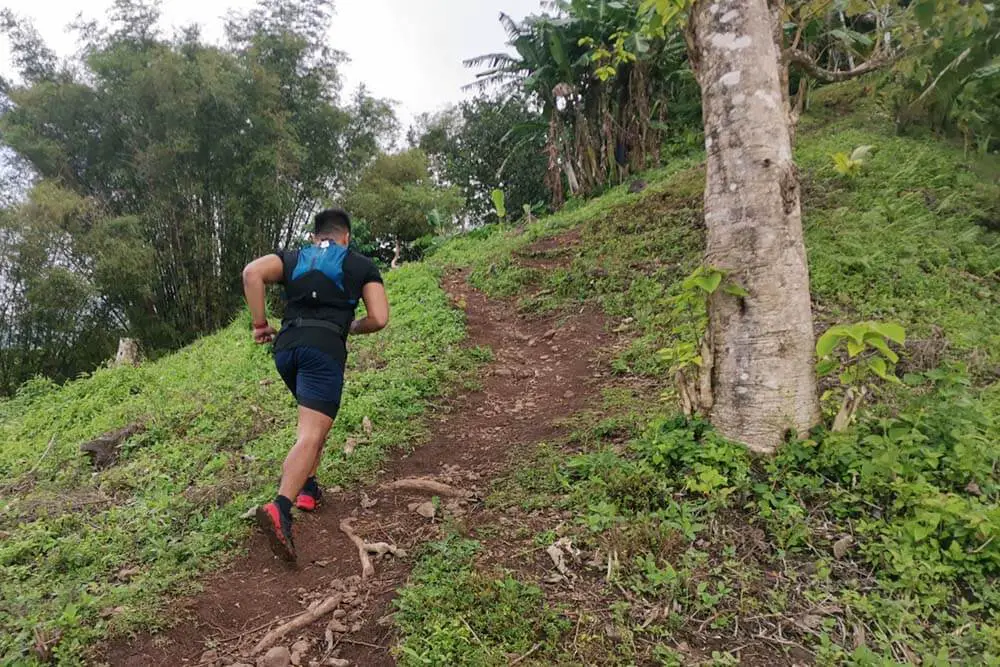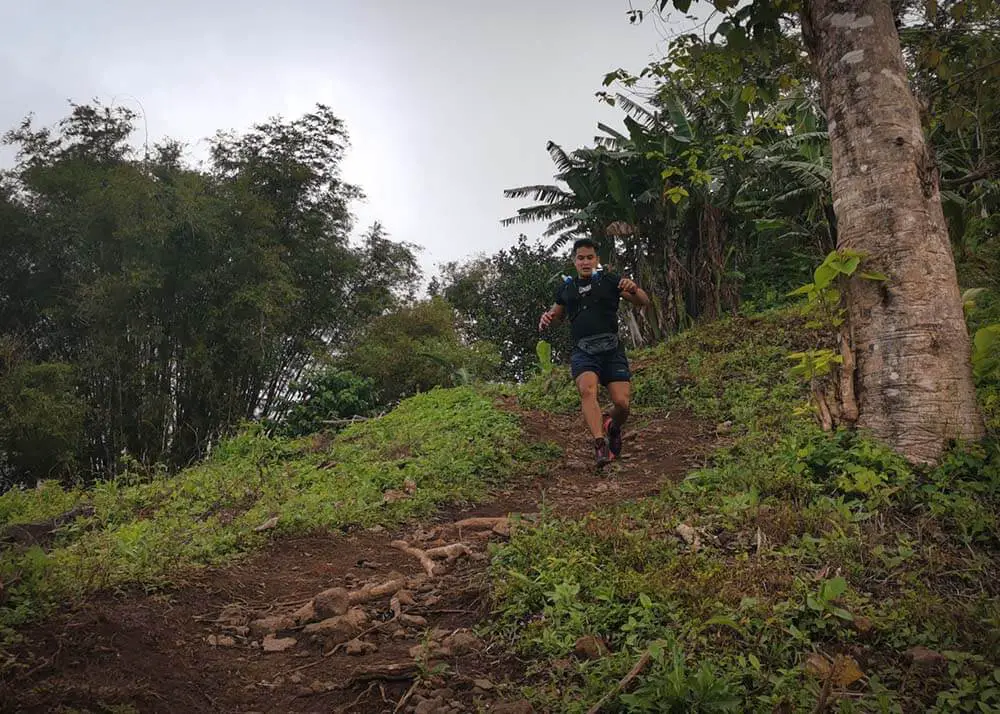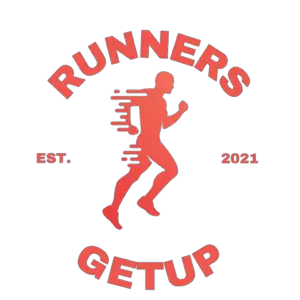This post contains affiliate links.
Many runners are reluctant to try trail running believing it to be high impact and potentially damaging to their knees. But is this true? I asked a physiotherapist to weigh in on the subject.
Ahead, we’ll talk about trail running and how impactful it is to your joints compared to road running. We’ll also look at some ways to avoid injuries when you’re on trails. So if you’re a trail runner or thinking to be one, read along.
Is Trail Running Lower Impact Than Road Running?

In general, trail running is a lower impact activity compared to road running because of the running surface.
Most trails typically have more give and absorb some of the impact generated by running.
That said, your joints only receive a fraction of the impact generated by your body weight repeatedly bouncing off the surface when you run.
In contrast, the pavement is a harder surface with less give. Because of this, your joints take the full force of the impact with each stride.
Over time, this can lead to injuries such as the runner’s knee or shin splints.
Related post: Is Trail Running Bad For Your Knees?
Sometimes Trail Running May Cause More Impact Than Road Running
That being said, there are some circumstances where trail running may cause more impact than road running.
For example, you may land harder when running downhill because of the added gravity. This can lead to more stress on your joints and muscles.

Another example will be running on rocky, technical terrains. Large boulders are incredibly solid, even more so than pavement itself.
Not to mention, you also have to jump from rock to rock in this type of technical terrain making it way more impactful than simply running on a flat pavement surface.
In my personal experience, I typically feel more joint pain when I’m running on boulders than on pavement.
In such terrains, a combination of proper strategy and footwear is required to reduce impact and prevent injuries.
Related post: How To Prevent Knee Pain When Running (A Physio Weighs In)
Other Risks of Trail Running
As we’ve discussed, most trails—particularly soft forest floors or dirt roads—cause less impact on your joints than running on pavement, therefore, are considered more joint-friendly.
But that doesn’t mean you are free from all risk. In fact, I’d argue that trail running is riskier than running on roads.
Some of the risks include:
- tripping on roots
- twisting an ankle
- getting attacked by a large animal
- getting bitten by a snake
- getting lost
If you’re interested to find out what trail runners think about these dangers, I made an article outlining the risks associated with trail running and what trail runners think about them.
How to Take Care of Your Joints When Running
If you want to take care of your joints when running, there are a couple of things you can do:
- Choose softer surfaces: If you have the option to run on different surfaces, choose the softer ones such as grass, dirt, or sand. These surfaces will absorb more of the impact generated by your body weight than harder surfaces such as concrete or asphalt.
- Wear proper footwear: Wearing the right shoes can make a big difference in the amount of impact your joints experience. Look for shoes with ample cushioning to absorb the shock of each stride. One shoe that I highly recommend for road running is the Brooks Ghost 14.
- Build up slowly: If you’re new to running, start slow and gradually increase your mileage and intensity over time. This will give your joints a chance to adjust to the new activity and reduce the risk of injuries.
- If you run on roads, run on the asphalt: If you have to run on roads, try to stick to the asphalt as much as possible. It’s a softer surface than concrete and will cause less impact on your joints.
- Cross-train: Incorporate other low-impact activities such as swimming or biking into your training to give your joints a break from the impact of running.
- Listen to your body: If you start to experience pain in your joints, take a break from running and consult a doctor.
- Strength train: Your muscles support your joints and provide power in your stride when running. Therefore, it’s not only healthy for your joints to strength-trail, but it’s also a performance booster.
If you’re interested in becoming a better and healthier runner (whether on trails or roads), then you must also have the right foundation of strength, muscle balance, and proper form.
But one of the most common problems for runners is they neglect to strengthen the key running muscles for running, therefore, hampering their performance.
That is why James Dunne, a running coach, and sports rehab specialist, created the Glute Kickstarter Program for Runners.
Why the glutes? Well, it’s the largest muscle in the human body and is very much involved in running and other activities. However, because we sit more than we should, the glutes are used less and become atrophied, and weak.
It’s a 12-week program designed to:
- help you identify weak links in your form,
- build and strengthen your glutes (the largest muscle in the body, and is also commonly neglected)
- develop your hip and core stability
- teach you how to use your glutes more effectively through running drills and cues
Conclusion
Trail running, although it may be riskier than running on roads, is a great way to reduce the impact on your joints.
If you’re looking for a more joint-friendly option, consider running on softer surfaces such as grass, dirt, or sand.
Wearing the right shoes and building up slowly are also key to reducing the impact on your joints.
And finally, don’t forget to cross-train and strength train to support your joints and muscles.
If you’re looking for trail running gear, I made a complete trail running gear guide in another article. I highly recommend you check that out.
